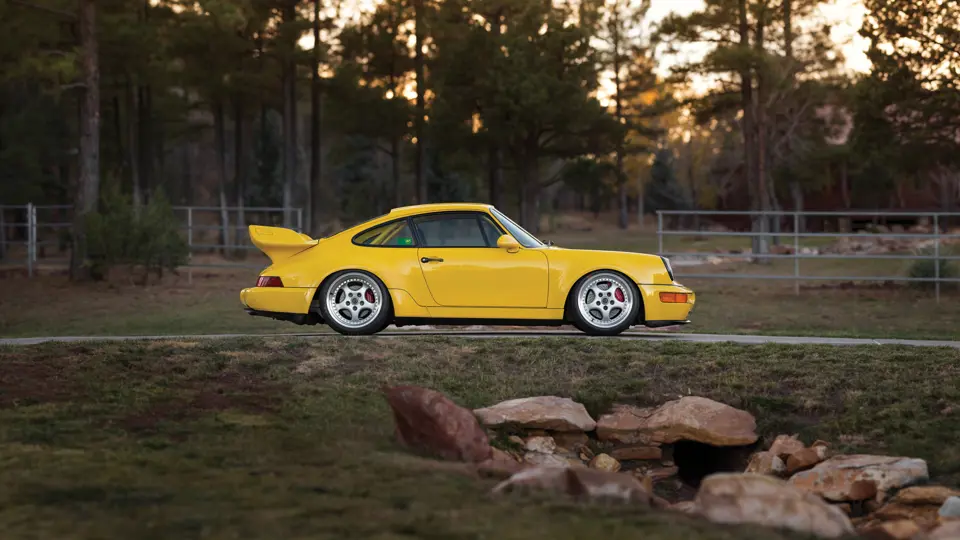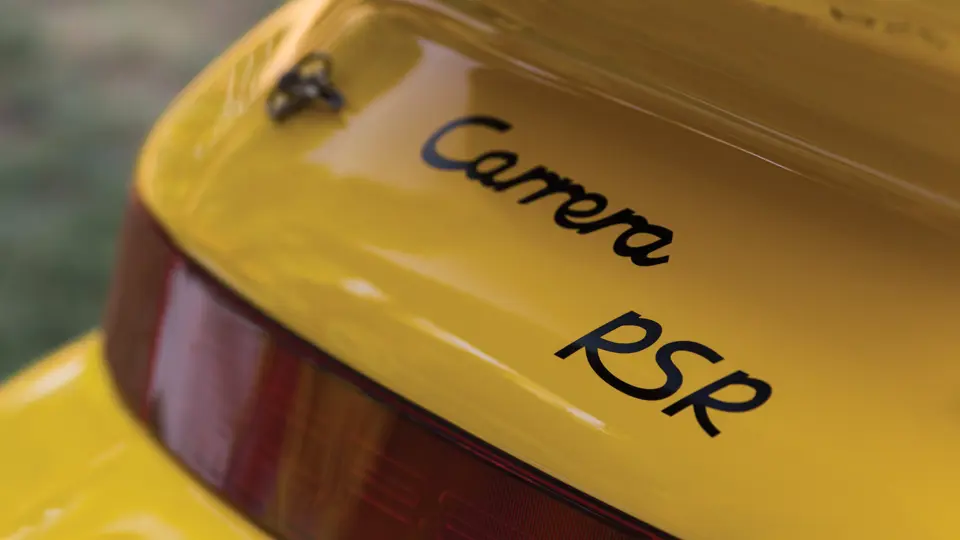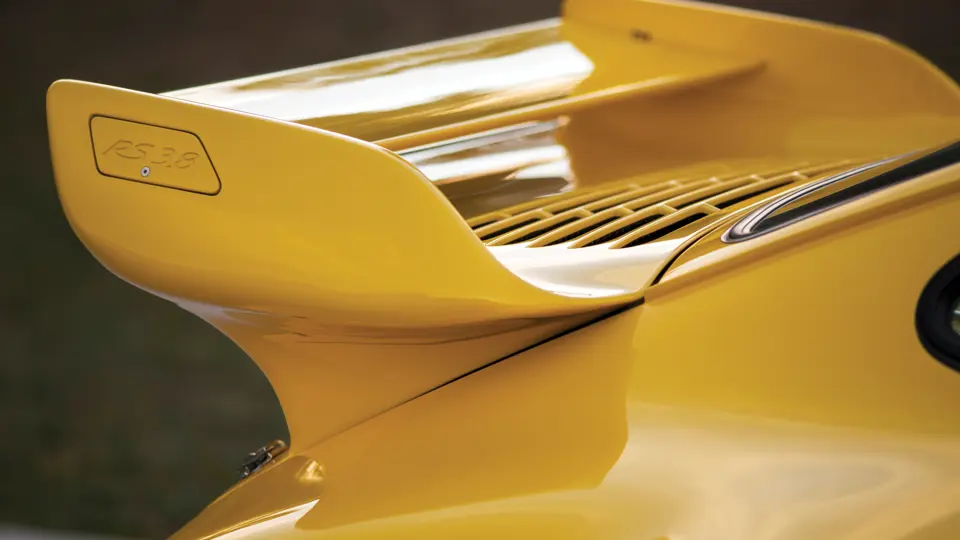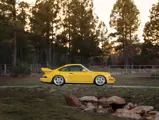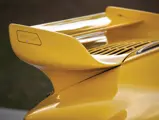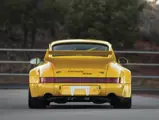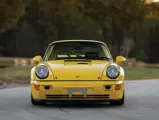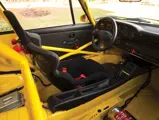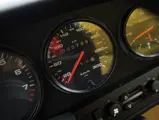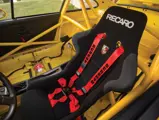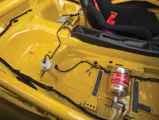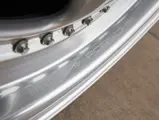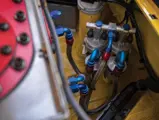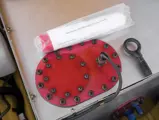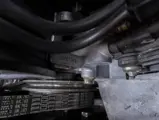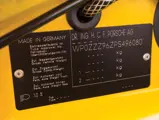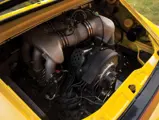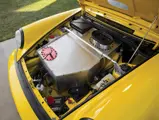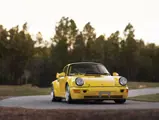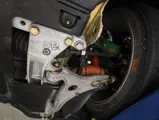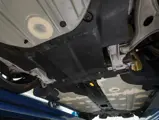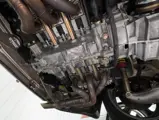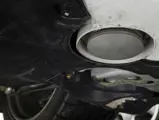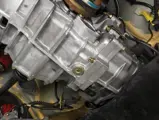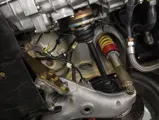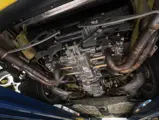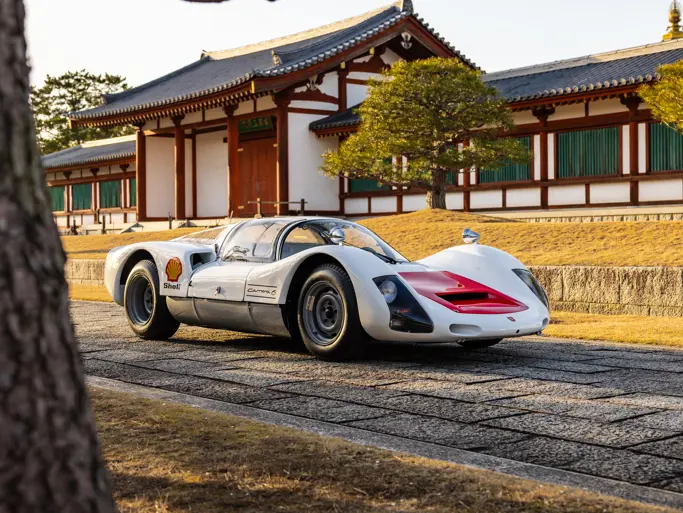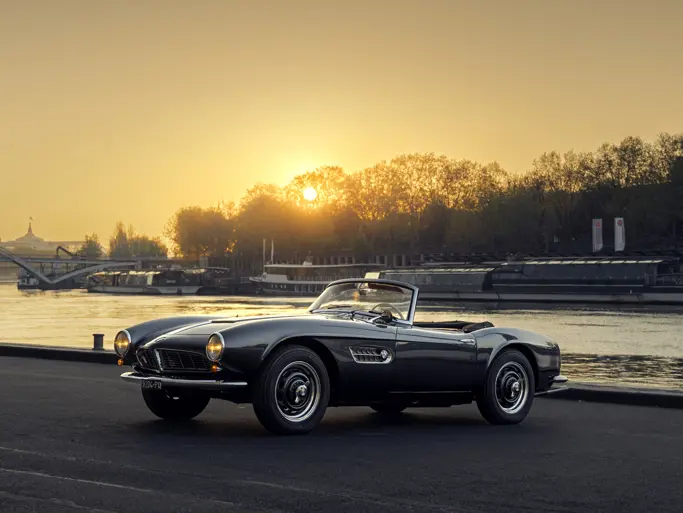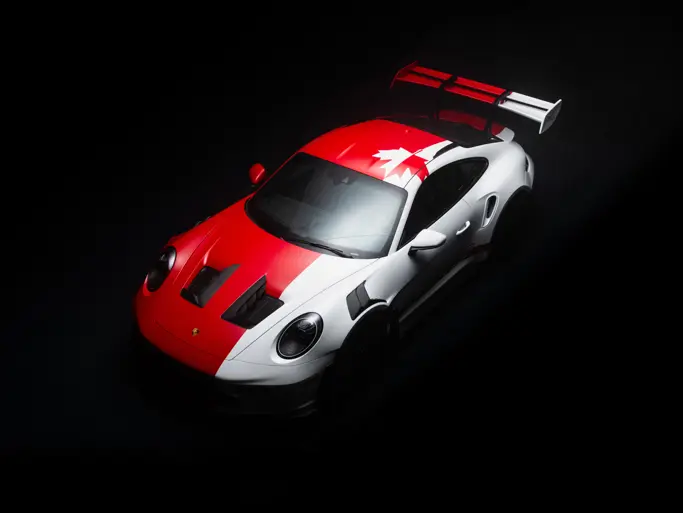
1993 Porsche 911 Carrera RSR 3.8
{{lr.item.text}}
$1,270,000 USD | Sold
Exclusively Porsche – The 964 Collection
{{bidding.lot.reserveStatusFormatted}}
- Exclusively Porsche - The 964 Collection
- One of only 55 built
- Paint-to-Sample Ferrari Yellow
- 765 km from new
- Matching-numbers drivetrain
- Porsche Certificate of Authenticity
The 964 Carrera RSR reflected Porsche's return to production-based GT racing dominance. Based on the only slightly less-potent RS 3.8, the RSR was a full-bore lightweight Turbo-bodied beast aimed at major European GT contests and the North American Supercar series. The rear of the 911 Turbo's wide body was occupied by a model-specific Type M64/04 3.8-liter air-cooled flat-six, naturally aspirated with 11.4:1 compression, lighter pistons, dual ignition, new intake manifolds with six individual butterflies, dry-sump lubrication, and Bosch electronic fuel injection. This potent engine, essentially a 3.6 with a 2-mm bore increase, gave as much as 375 hp - perhaps more - and 284 foot-pounds of torque, depending on class restrictions. Power was fed through a racing clutch to an uprated five-speed manual transaxle with 40 percent limited-slip. Porsche constructed 49 RSR 3.8s plus one pre-production test car and one factory race car, plus then a delayed run of four cars that have been omitted on many records, for a total of 55 units, enough to satisfy FIA homologation requirements.
Body shells for the new RSR were crafted on the normal 964 assembly line, with all seams in the tub welded for additional strength. The painted tubs (red, yellow, blue, or black) were then trucked over to Wilfried Matter where a full roll cage with side-intrusion protection was welded in before the shells were returned to Zuffenhausen for completion. The cage structure added considerably to the tub's torsional strength. The uprated suspension, lowered by an inch and a half, incorporated stainless-steel Heim joints, fully adjustable competition Bilstein shocks and struts, adjustable anti-roll bars, ABS brakes from the Turbo S with competition pads, and wide, three-piece modular Speedline wheels of 18-in. diameter that were half an inch wider than those of the RS at 9.5 and 11.5 in., respectively.
The cockpit was fitted with a single Recaro racing bucket seat, a full Shroth six-point racing harness for the driver, and a fire suppression system. The windows were of thinner and lighter glass. Lightweight composite material was used for both the front and rear bumper fascias, with air intakes placed in the front bumper. Both the doors and front trunk lid were fabricated from aluminum, with the trunk lid secured by the special hold-down clips which had replaced the earlier-style rubber hold-downs. The engine cover was steel, to better support the large fiberglass adjustable bi-lane rear wing used on the "basic" version. A British-sourced Premier fuel cell with its attendant pumps was installed in the front trunk area, and provision was made for through-the-hood refilling. An additional oil cooler was installed behind the front valance. The re-mapped Bosch Motronic control box was mounted behind the driver's seat. A small red button on the floor ahead of the gearshift is said to operate a very small reserve fuel system to help prevent a race car from going dry while far away from the pits. A driver-operable electrical master switch was installed in the front trunk, and an emergency fire system pull-handle was placed on the cowling ahead of the windshield. These race cars could be ordered with a built-in pneumatic jack system and center-lock wheels to expedite pit stop wheel changes. Porsche's engineers were pleased to find that the completed cars scaled 2,673 lbs. dry, less than the class minimum, and teams were able to add ballast where desired to meet the weight requirement.
This powerful and aerodynamically efficient coupe was very quick - Car and Driver tested one of the first RSR 3.8s brought into the U.S. and said it could sprint to 60 mph in a mere 3.7 seconds - quicker than the turbocharged Ferrari F40 - hit the quarter-mile mark at 12.1 seconds/116 mph, and max out at 181 mph.
As one might expect, the RSR 3.8 was a winner right out of the box, taking overall honors at the 1994 Spa 1000 KM with Fittipaldi, Jarier, and Alzen; and the 1000 KM of Interlagos in Brazil with Hermann, Konrad, and Prangemeier. An RSR 3.8 won its class at Le Mans with the French team of Pareja, Dupuy, and Palau; and at its first appearance in North America, RSR 3.8s swept the first four places in IMSA's GTU category with the first of that quartet - shared by Richter, Wlazik, Ebeling, and Döbler finishing 3rd overall ahead of the fastest WSC Prototype. There was another class win at the 12 Hours of Sebring with Ham, Varde, and Sandridge. In the hands of skilled drivers, the RSR 3.8 was a formidable racing machine.
RSR production ran between April 1993 and December of 1994. The Turbo-look Register notes that 27 were delivered to Germany; 11 to the U.S.; three each to Japan, Italy, and Great Britain; two each to Switzerland and France; and one each to Monaco, Holland, Austria, and Australia. This stunning example is one of three sold to Porsche's Japanese distributor, MIZWA Limited in Tokyo, and is the only one of the entire series delivered in special-order Ferrari Yellow ("Fly Yellow" in Ferrari parlance) with black anodized window frames and headlight rims. The engine cover bore distinctive "Carrera RSR" script in a large font, making it easier for slower cars to understand what just passed them.
The current owner and consignor, a prominent Porsche enthusiast, imported this virtually new Porsche as a DOT/EPA "Box 8 Race Car exempt" vehicle to join his collection of high-quality performance Porsches. Although it has recorded only 765 km (475 miles) of use, it has been properly maintained from new. To keep all engine, transaxle, and other seals in proper working condition and to determine if there were any components needing attention, this car has been driven about 30 miles a year at a private motorsport facility. Prior to sale, this car will have been properly serviced by a Porsche-trained technician with Porsche Classic oil and filters and thoroughly inspected.
This rare and exciting Japanese-delivery Porsche is well documented, supplied with all its special emissions and safety labeling, original metric instrumentation, and a Porsche Certificate of Authenticity. Here is as fine an example of a highly desirable, low-mileage Porsche as one could hope to find, and it would make a wonderful addition to any serious collection.




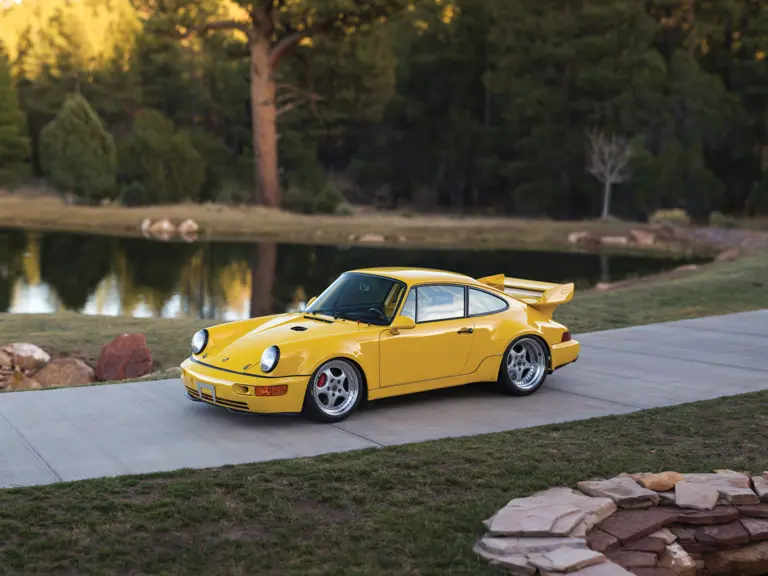
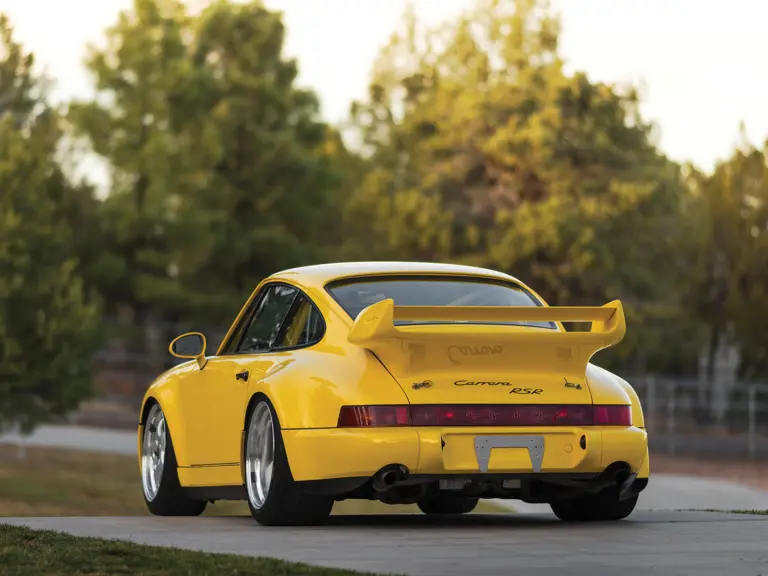
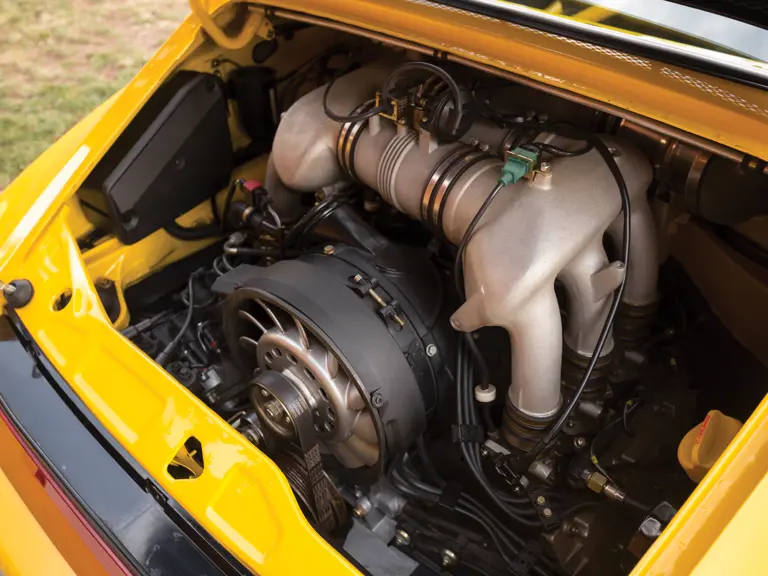
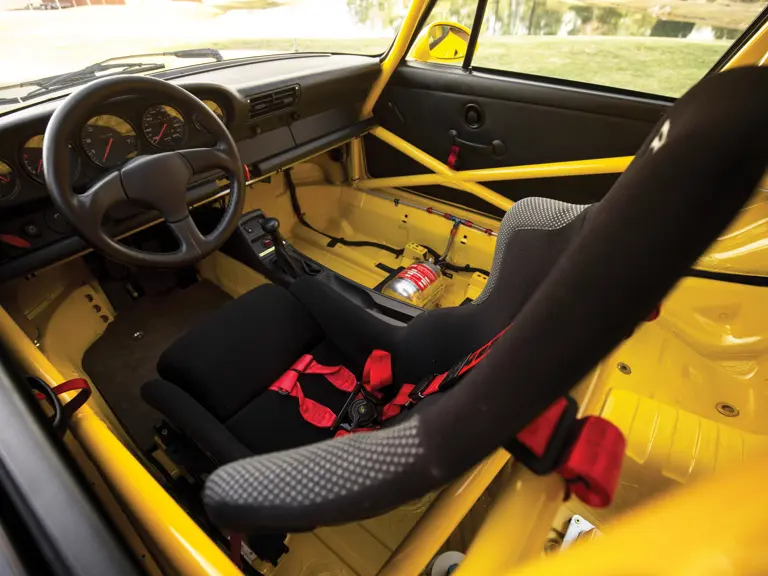
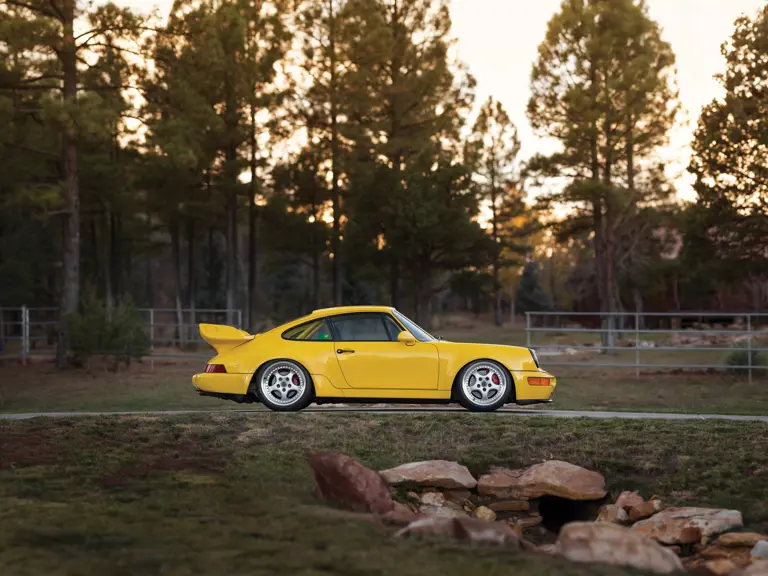
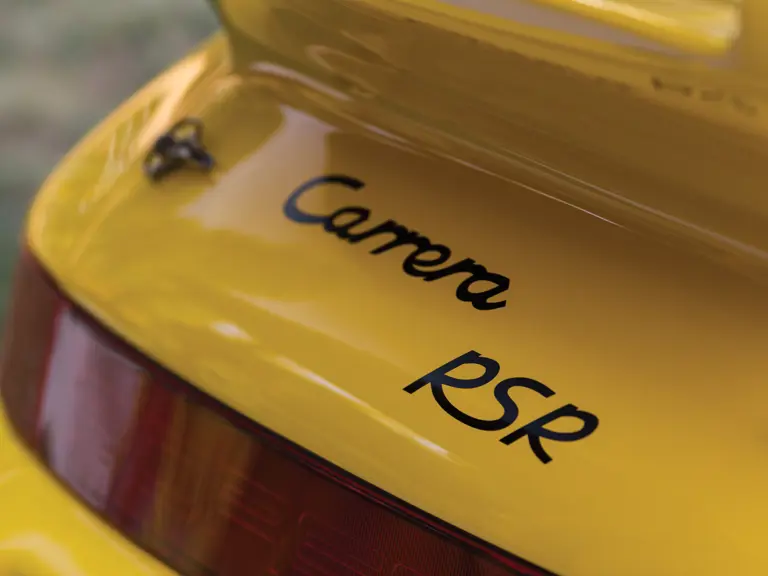
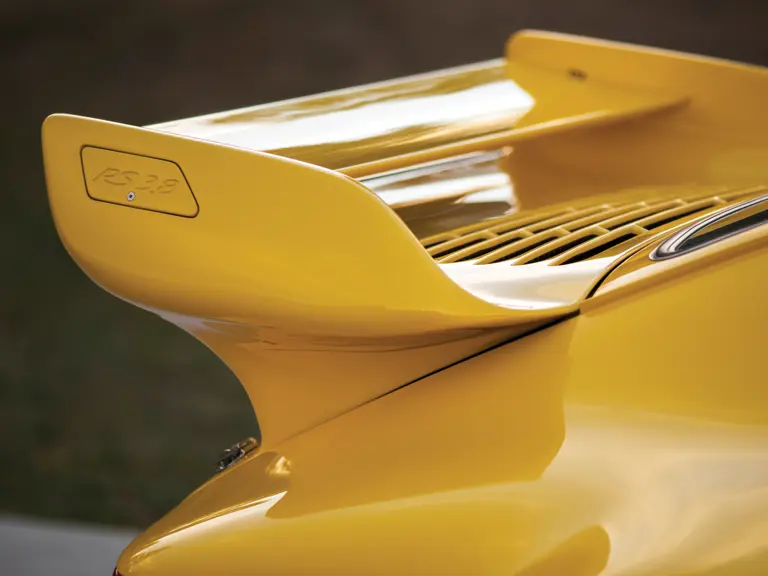

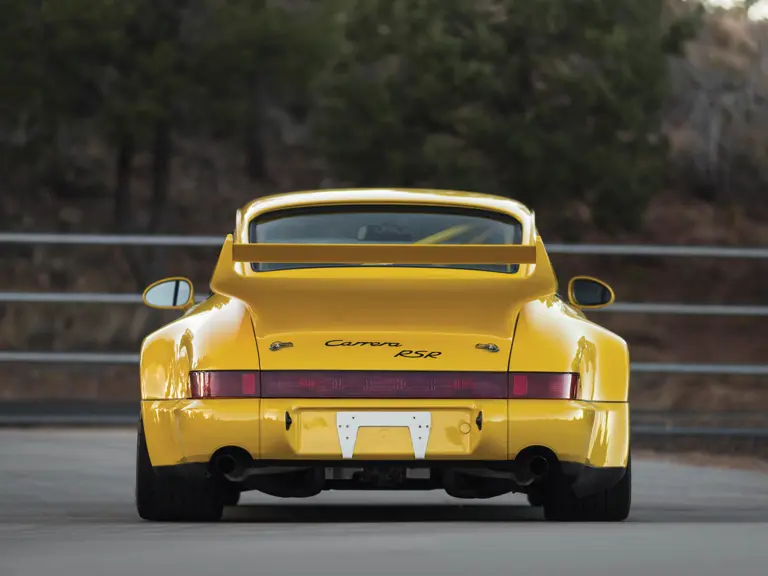
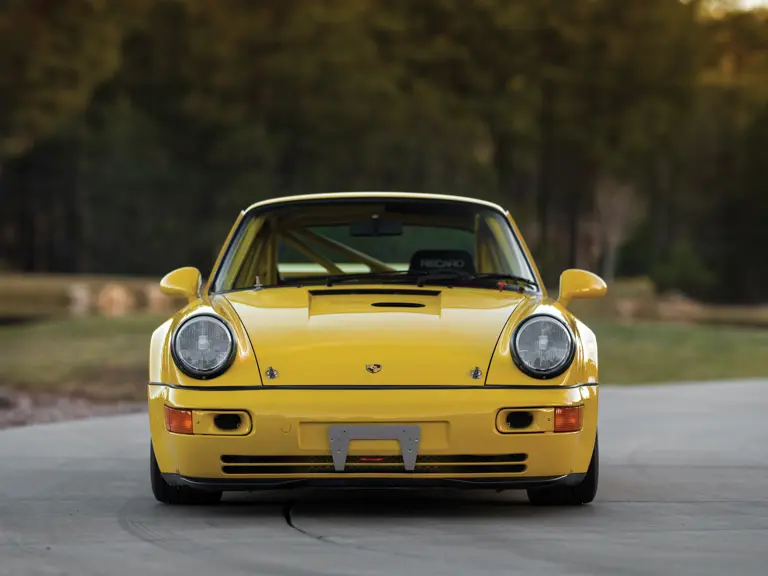

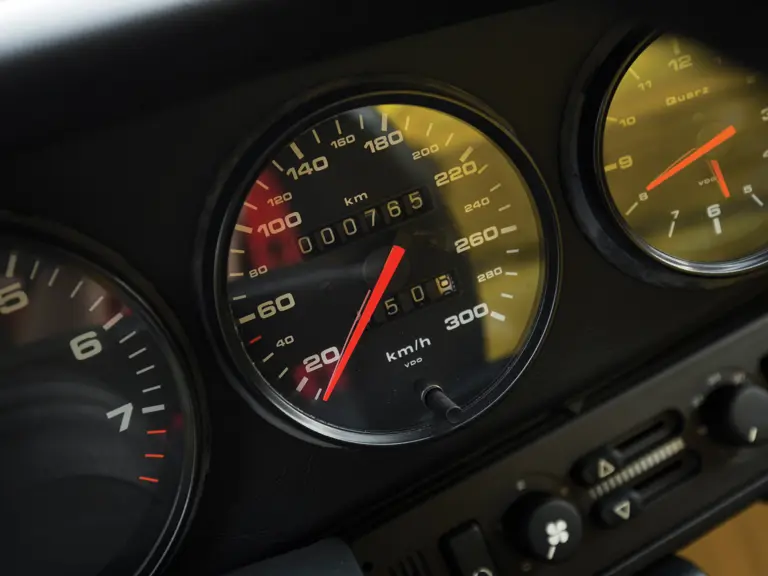

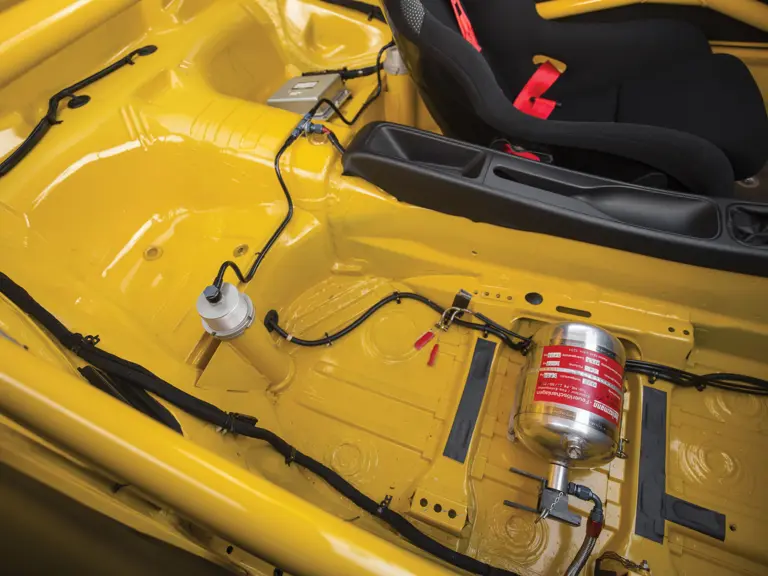
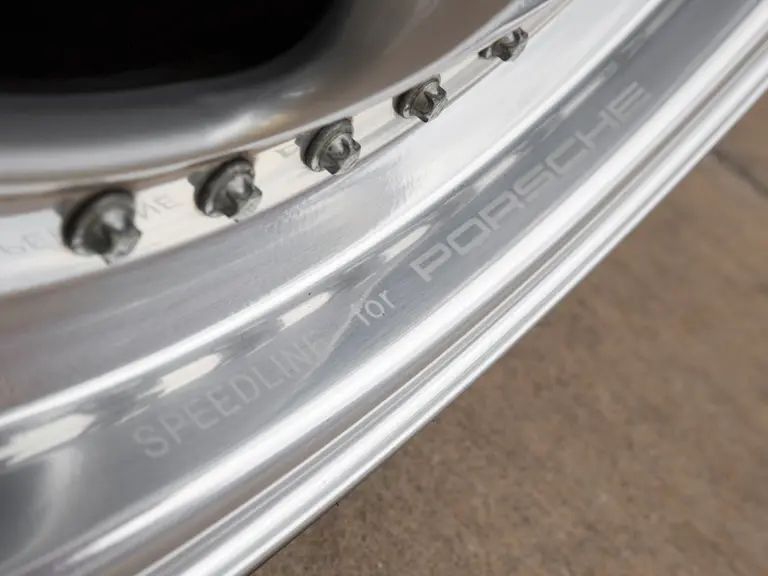
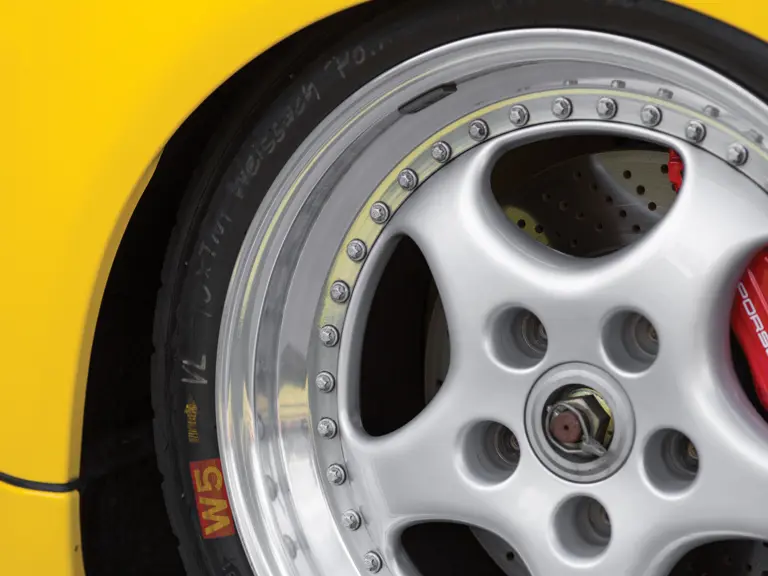
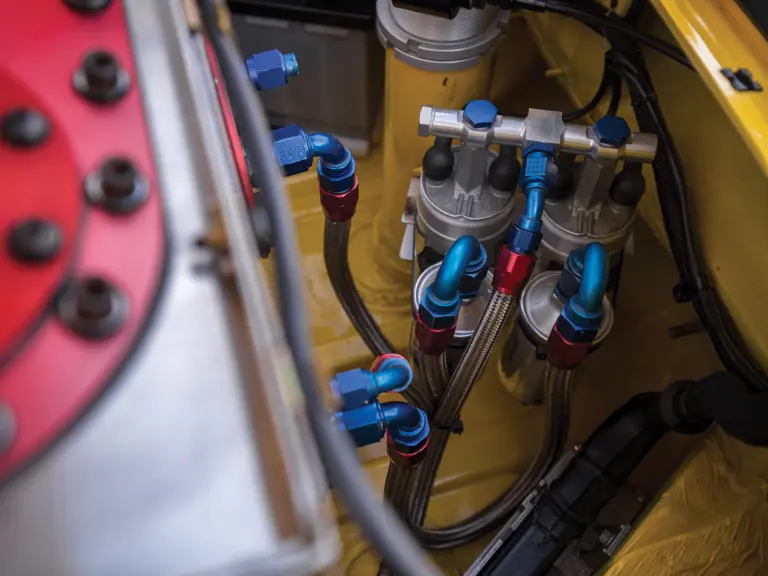
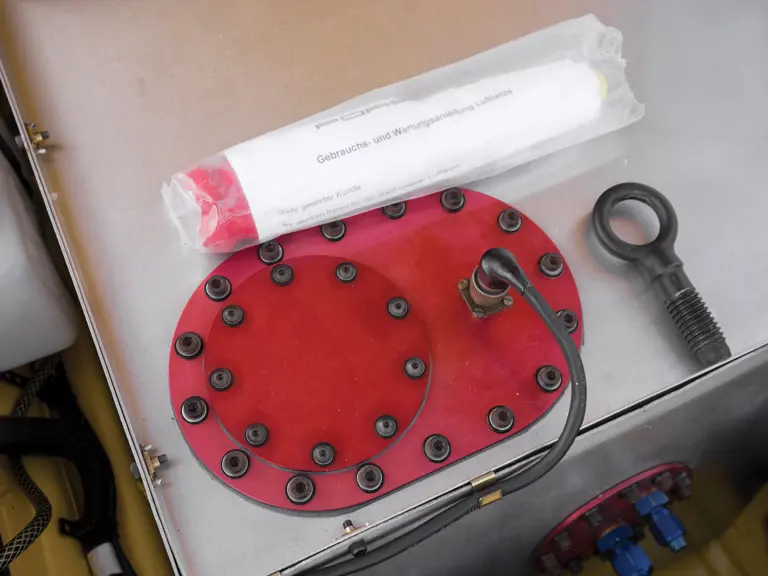
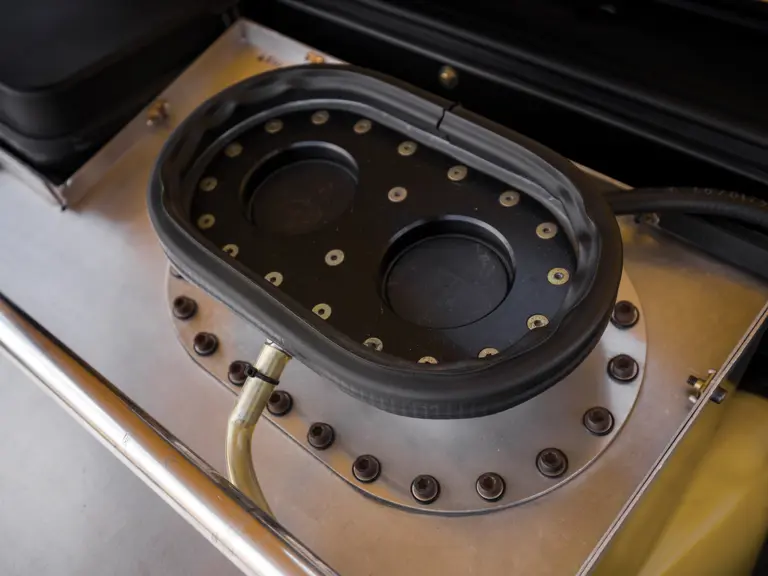
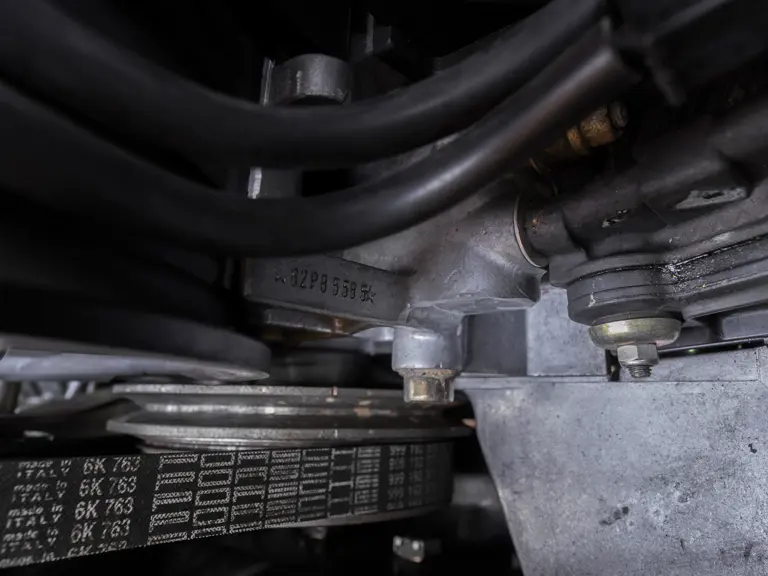
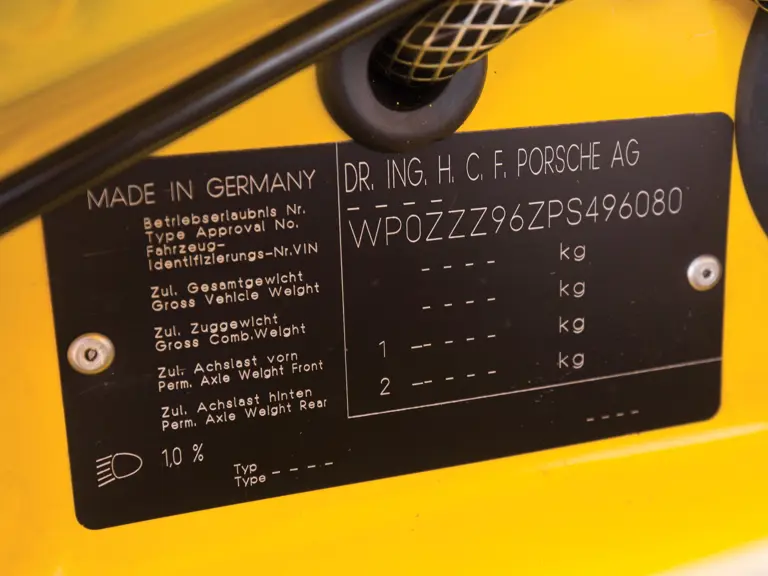

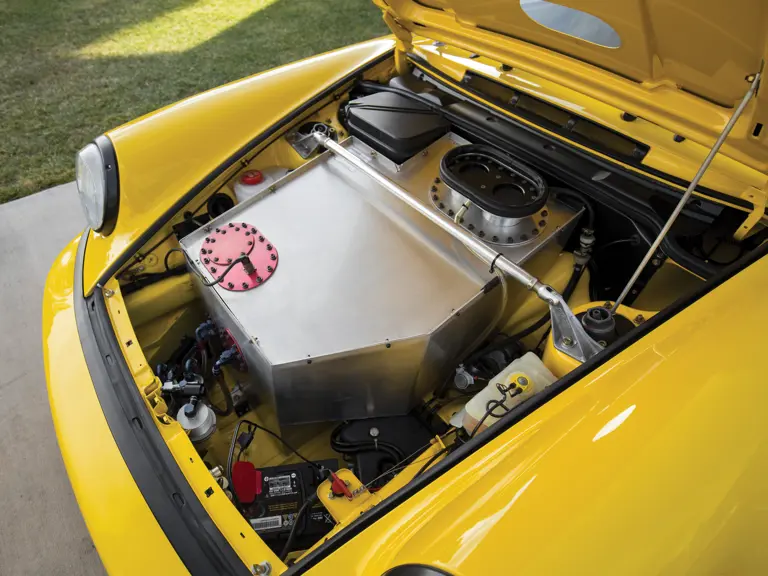
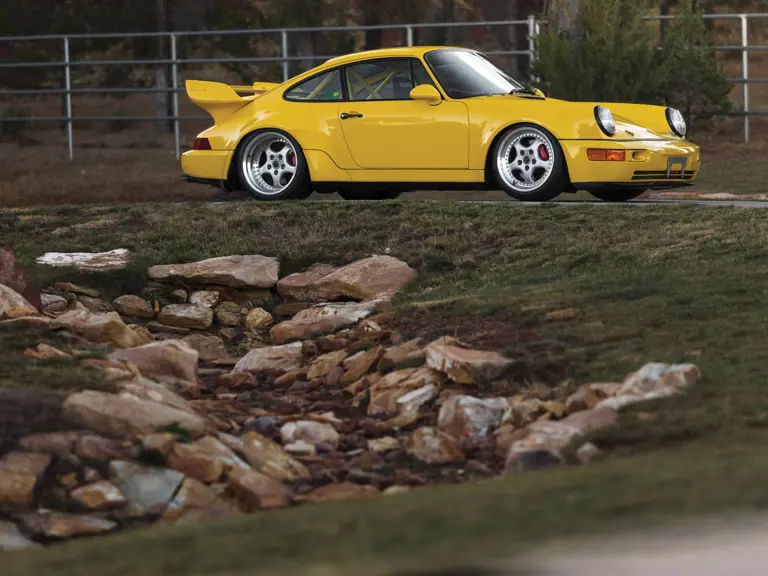

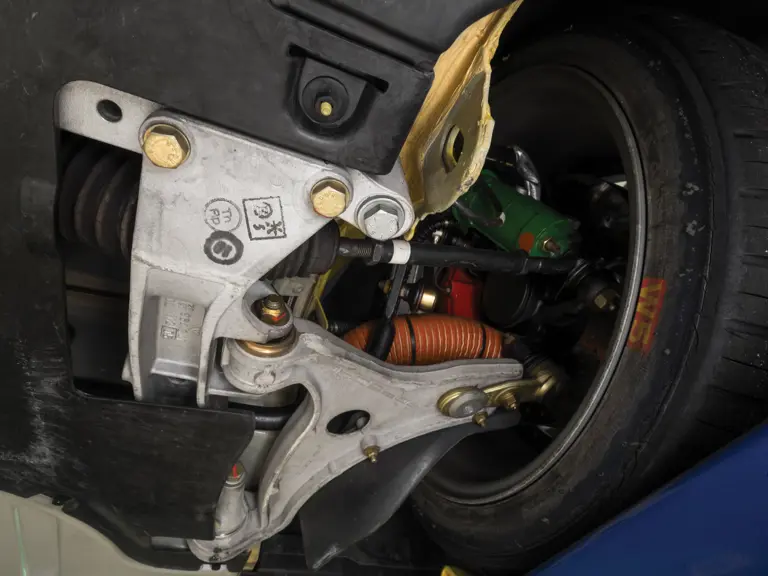
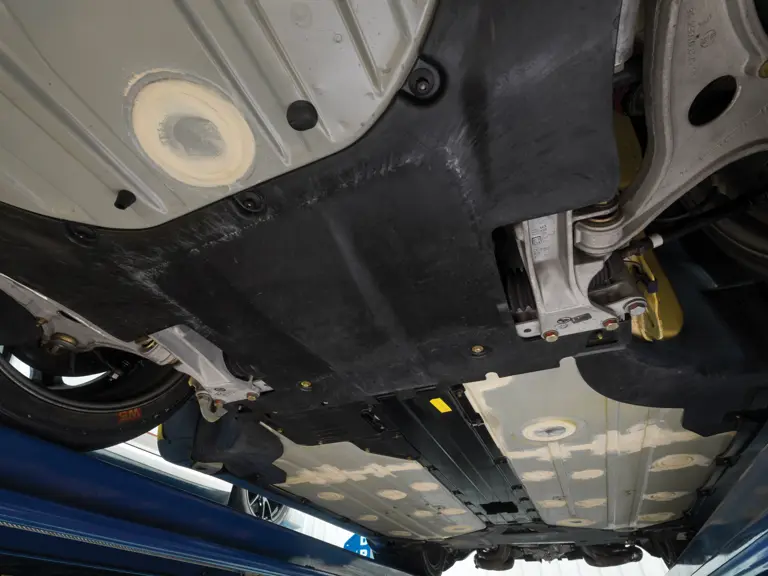
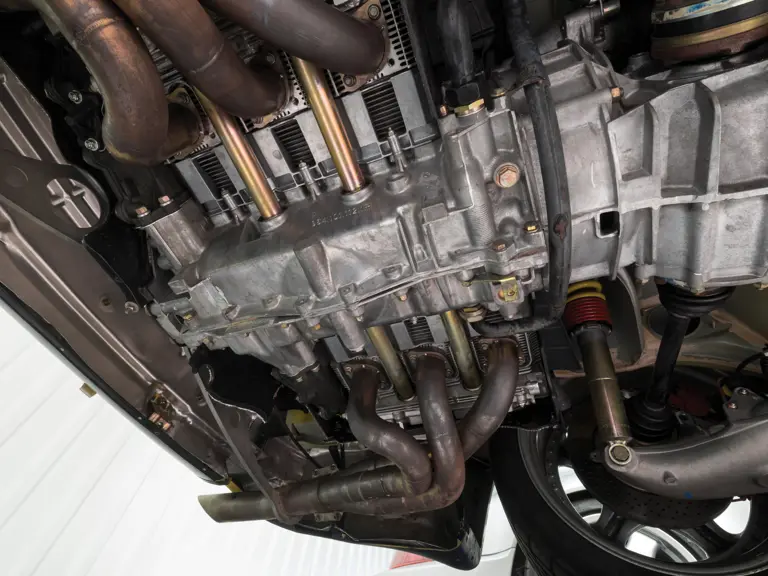
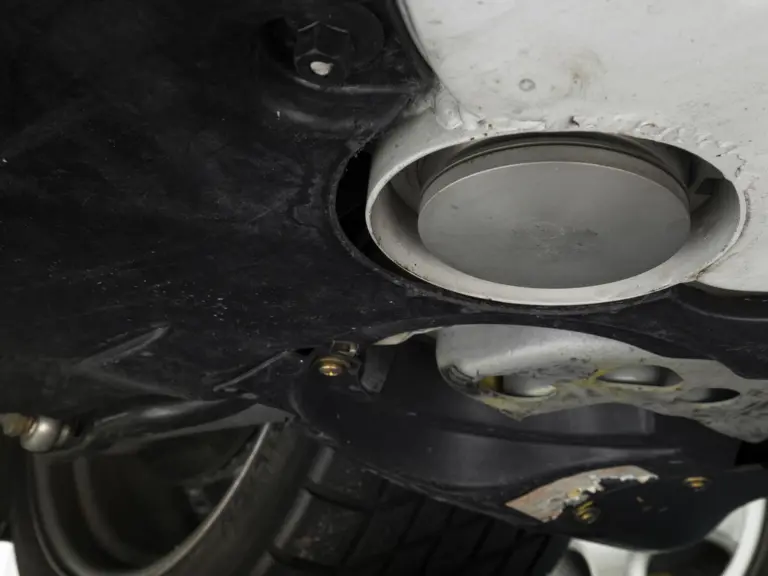
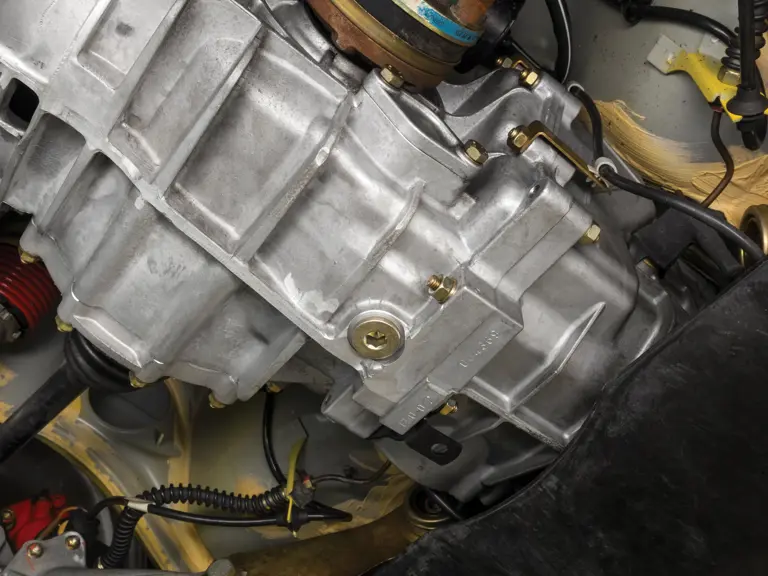
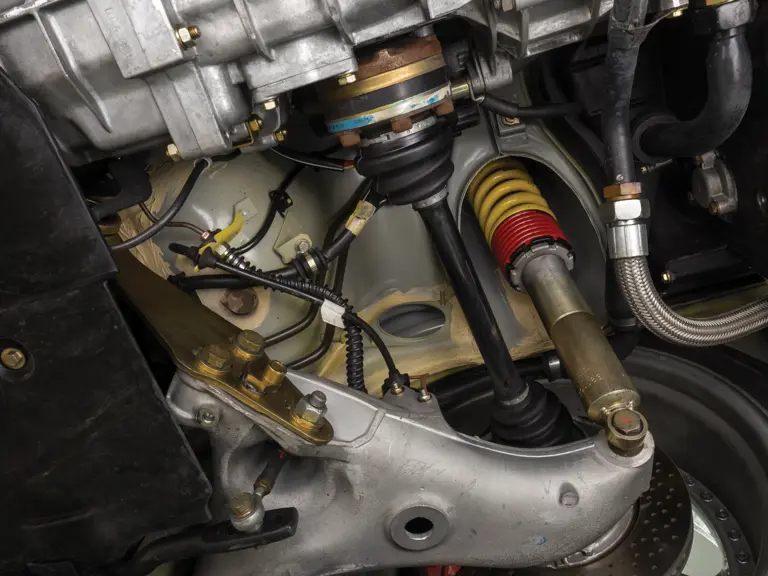
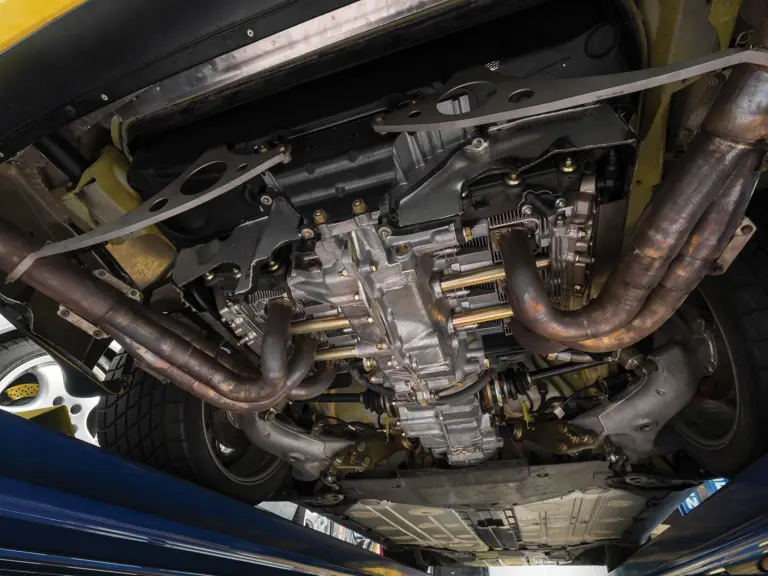
 | Amelia Island, Florida
| Amelia Island, Florida
